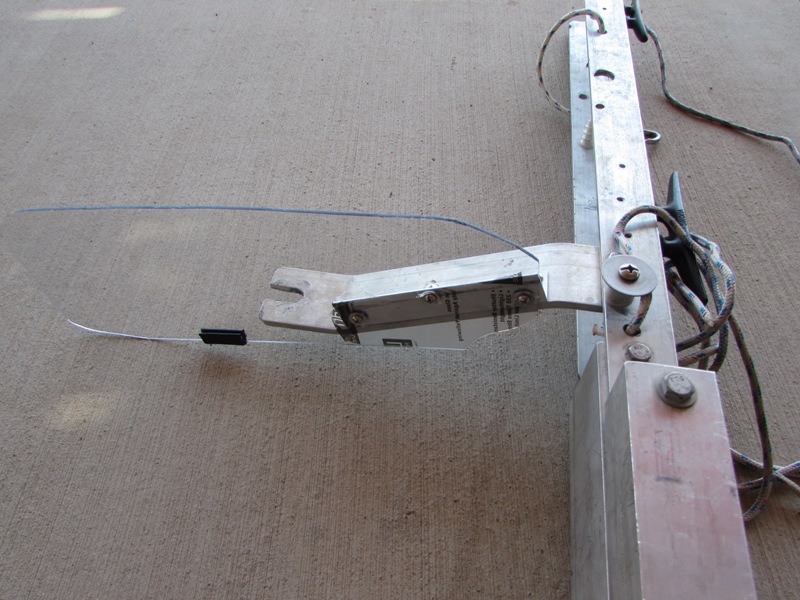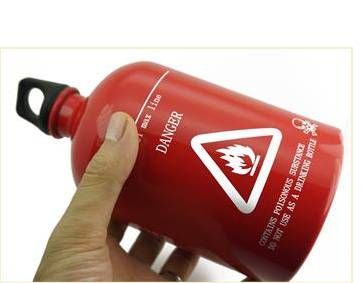|
The problem with the front hatch is when it's sitting static on the ground the rubber seals typically seal pretty well, of course you need to check them and adjust to what is needed to insure both seals are actually in contact with the lid and hull all the way around.
Obviously the lid is injection molded so it will always be very flat and accurate. The problem is the hull itself which is rotomolded and not very accurate or consistant. Resulting in some boats not having a good seal (mostly in the center), on those boats you can typically see a gap as much as 1/8" in the outer seal near the center.
If you lay a flat plate on top of the inner seal (one side only) on the hull you can quickly see if there is a dip in the middle. Alternately you can just spread some margerine or grease on the inner surface of the hatch cover, place the hatch on, press the hatch down, but don't put the bungy on, then remove and look at the underside. If there is a break in the impression in the grease, you have a gap. The ideal fit would be get the gasket to seal all the way around by just putting the hatch on, but not applying the bungy (a perfect fit). The reason for this is the seals have some give designed in (they flex). The problem that comes up is if you bungy the hatch down hard, you bottom out the seals on the ends (front and back) but the center area is barely touching the lid (no adjustment left to compensate for hull flex).
The ideal fit is if you can get the inner and outer seal to mark onto the grease all the way around without applying any downward pressure to the lid. Then when you apply the bungy all the seals flex evenly giving the seals the neccessary give and flex that they need to compensate for the hull flexing. In theory it's a great design and should work flawlessly. However in practice because of the rotomoding inaccuracies, and the flexible loosy goosy nature of rotomolding polyethylene, lets just say the fit coming from the factory is far from perfect on some hulls. It's not a design problem (the design is ok), It's a manufacturing problem.
Pretty much any of us can go in and adjust the seals to make everything work correctly, but it takes a little time effort and patience.
Basically it boils down to seal type selection. There are two basic type seals, you have a compression type seal ( O-rings sealing a flat surface like a pump housing, and cork and bottle seals (like a wine cork).
Hobie probably should have used a cork and bottle type seal initially, but they didn't, so we have to live with what we have, and need to compensate for that.
To get the seals to work correctly you may have to remove some material from the outer edge of the lip on the lid. And also the inner edge of the hull opening so be very careful, once the material is gone it can't be put back.
To actually measure some of these gaps it's pretty easy to just roll up some play dough or clay lay it across the joints in several places press the lid down then remove. You can then clearly see how much material needs to be removed.
Yes it's time consuming and labor intensive and you have to be very careful.
The whole key here is understanding how the sealing system is supposed to operate, then adjust as needed.
In some cases the gaps are so huge it might be easier to add material to the edges vs removing material (actually might be easier in the long run.
To do that you simply remove all the seals. Place a bead of some type of calk or adhesive along the outer edge of both the outer lid and the inner edge of the hull. Of course you have to make sure the caulk or sealant doesn't stick to the opposing surface (result would be you just glued your lid down (that would be bad just sayin). Any kind of mold release spray, vasiline, grease, butter, saran wrap will work, your choice. Then place the lid on and squeeze the calk out by applying pressure to the lid (not enough to flex the lid too much, just enough to get it to bottom out on the hugh spots.
Now let the silicone or caulk dry (a day or so to insure it's completely setup. Now remove the lid carefully (if it doesn't come off, you just screwed up bad). Now just simply knife away the excess material where it bulged out past all the edges (actually pretty easy to do, doesn't have to be fancy. If your using silicone (what I use) a sharp razor cuts thru easily).
Now put your seals back on, being careful not to knock the silicone or caulk off the edge. Once the gaskets are in place the silicone is pretty protected under the gasket seals, so this is a one time fix.
The gasket is always uniform, if your gaskets are deformed, get new gaskets.
Ideally you should now be able to place the lid on, without applying any pressure (ie bungy), it should pass your butter/ grease test, in other words it sould seal all around both surfaces before applying any pressure. Now when you put the bungy on the whole cover should drop down and compress the gaskets about 1/16 inch, that is the cushion needed to compensate for hull flex on the water (pretty nessessary).
If you want it done right this is the way. If you want cheap and fast, just add keiths Roid gaskets (works great), or Tony's Yoga mat, also works great.
The whole key hers is understanding how it's supposed to work first, once you understand that part, there are many ways available to fix the problem.
Keep in mind the additive method of fixing (ie...the caulk trick). Those beads could be well over 1/8" tall and likely very delicate (yea thats how far off some of the hulls are).
The additive method is great, because if you muff it up, just peel it off and do it again. A $3 dollar tube of caulk should last 5-6 tries, try and choose a caulk that sticks to PE fairly well (I use silicone). I find cleaning the surface you want to bond to with Heptane (bestest rubber cement thinner), then spraying on a very light coat of Krylon for plastics clear spray paint onto the surface prior to putting the silicone on, makes the silicone bond to the polyethylene plastic like nobodys business (really hard to get off). (Heptane melts PE so be a little careful (Heptane ( a component in gasoline) is the active ingredient in the Krylon plastic spray paint BTW).
Hope this helps
FE
|









